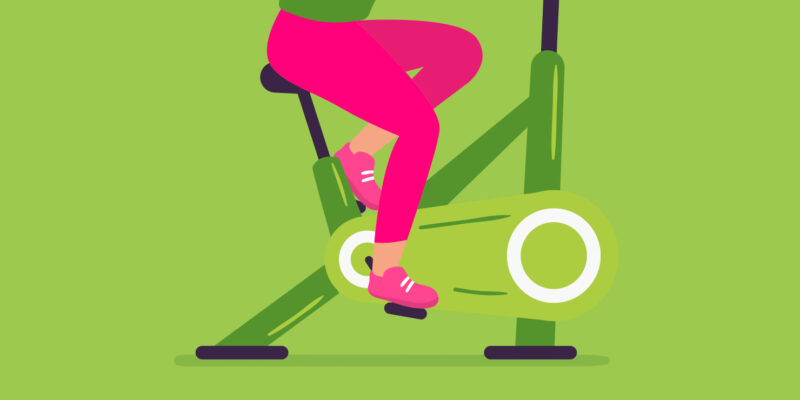Speak to your GP first if you have not exercised for some time, or if you have medical conditions or concerns. Make sure your activity and its intensity are appropriate for your fitness.
Activity recommendations for adults:
- Do strengthening exercises targeting all major muscle groups – legs, hips, back, abdomen, chest, shoulders, and arms – at least twice weekly
- Aim for a minimum of 150 minutes of moderate-intensity activity or 75 minutes of vigorous-intensity activity each week
- Spread exercise evenly over four to five days a week, or every day
- Reduce sitting or lying down for extended periods and interrupt prolonged periods of sitting with some movement or activity
You can also achieve your weekly activity target with:
- Several short sessions of very vigorous intensity activity
- A mix of moderate, vigorous and very vigorous intensity activity
These guidelines are also suitable for:
- Disabled adults
- Pregnant women and new mothers
When you start exercising after pregnancy, make sure your physical activity choices reflect your activity levels before pregnancy. You should include strength training. Vigorous activity is not recommended if you were inactive before pregnancy.
What counts as moderate aerobic activity?
Moderate activity will raise your heart rate, and make you breathe faster and feel warmer. One way to tell if you’re working at a moderate intensity level is if you can still talk, but not sing.
Examples of moderate intensity activities include:
- Brisk walking
- Water aerobics
- Riding a bike
- Dancing
- Doubles tennis
- Pushing a lawn mower
- Hiking
- Rollerblading
What counts as vigorous activity?
Vigorous intensity activity causes you to breathe rapidly and deeply. When engaging in this level of effort, you’ll find it difficult to speak more than a few words without needing to catch your breath.
Typically, 75 minutes of vigorous activity per week can provide health benefits comparable to those gained from 150 minutes of moderate activity.
Many moderate activities can be elevated to vigorous intensity simply by increasing your effort.
Examples of vigorous activities include:
- Running
- Swimming
- Riding a bike fast or on hills
- Walking up the stairs
- Sports, like football, rugby, netball and hockey
- Skipping
- Aerobics
- Gymnastics
- Martial arts
What activities strengthen muscles?
To get health benefits from strength exercises, you should do them to the point where you need a short rest before repeating the activity.
There are many ways you can strengthen your muscles, whether you’re at home or in a gym.
Examples of muscle-strengthening activities include:
- Carrying heavy shopping bags
- Yoga
- Pilates
- Tai chi
- Lifting weights
- Working with resistance bands
- Doing exercises that use your own body weight, such as push-ups and sit-ups
- Heavy gardening, such as digging and shovelling
- Wheeling a wheelchair
- Lifting and carrying children
Get active with The Everything App!
The Everything App is a groundbreaking partnership between the physical activity sector and public health, created to support millions of NHS workers and their families.
This powerful digital platform offers free access to a wide range of on-demand & live streamed activities, as well as discounted in-person fitness, sport, and wellbeing services. It helps users stay active, connected and healthy — wherever they are.
Fitness studio exercise videos
Fitness Studio Exercise Videos typically feature a variety of workout routines led by certified instructors. Videos can be tailored to various fitness levels, making them accessible for beginners to advanced participants.
Follow the link to access the fitness studio exercise where you can find a variety of workouts such as aerobic exercise videos, strength and resistance, Pilates and yoga.
Back care
Back care involves practices aimed at maintaining spinal health and preventing pain or injuries. Key elements include maintaining proper posture, engaging in regular exercise, and using ergonomic methods in daily activities.
Back pain is a common issue, but there are several actions you can take to reduce the risks of developing disabling back pain.
Follow the link to find out more (please note this link is internal and will only work if you are using a trust computer):
If you have experienced back pain or a back-related injury, you can self-refer to the occupational health physiotherapy service via email or telephone.
Get active!
There are so many different ways you can increase your activity!
One excellent resource is the NHS Get Active app, this is an initiative aimed at encouraging physical activity and healthy habits among users.
The app typically provides personalised activity plans, tracks progress, and may offer tips and suggestions for incorporating more physical activity into daily life.
